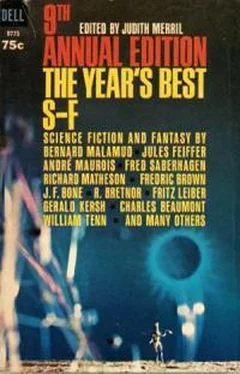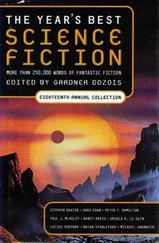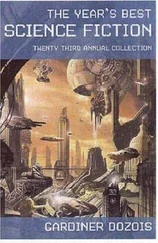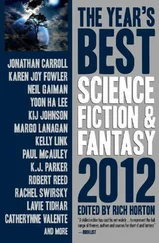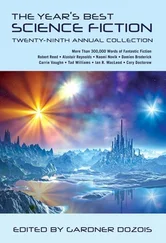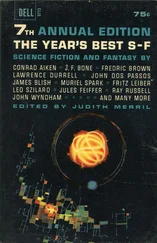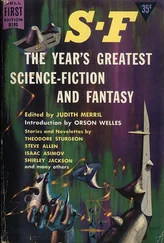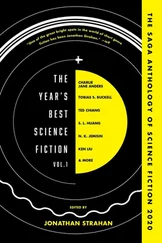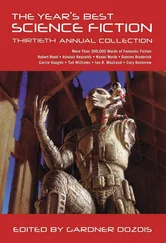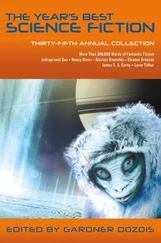The Year's Best Science Fiction 9
Здесь есть возможность читать онлайн «The Year's Best Science Fiction 9» весь текст электронной книги совершенно бесплатно (целиком полную версию без сокращений). В некоторых случаях можно слушать аудио, скачать через торрент в формате fb2 и присутствует краткое содержание. Год выпуска: 1965, Издательство: Dell, Жанр: Фантастика и фэнтези, на английском языке. Описание произведения, (предисловие) а так же отзывы посетителей доступны на портале библиотеки ЛибКат.
- Название:The Year's Best Science Fiction 9
- Автор:
- Издательство:Dell
- Жанр:
- Год:1965
- ISBN:нет данных
- Рейтинг книги:5 / 5. Голосов: 1
-
Избранное:Добавить в избранное
- Отзывы:
-
Ваша оценка:
- 100
- 1
- 2
- 3
- 4
- 5
The Year's Best Science Fiction 9: краткое содержание, описание и аннотация
Предлагаем к чтению аннотацию, описание, краткое содержание или предисловие (зависит от того, что написал сам автор книги «The Year's Best Science Fiction 9»). Если вы не нашли необходимую информацию о книге — напишите в комментариях, мы постараемся отыскать её.
The Year's Best Science Fiction 9 — читать онлайн бесплатно полную книгу (весь текст) целиком
Ниже представлен текст книги, разбитый по страницам. Система сохранения места последней прочитанной страницы, позволяет с удобством читать онлайн бесплатно книгу «The Year's Best Science Fiction 9», без необходимости каждый раз заново искать на чём Вы остановились. Поставьте закладку, и сможете в любой момент перейти на страницу, на которой закончили чтение.
Интервал:
Закладка:
It is not only the creatures of the Earth that can turn suddenly from what is known and natural to what is fearful and alien. In some ways, we know less about the ball of rock beneath our feet than about space itself; certainly far less than we should consider safe or reasonable for a house, a car, or spaceship. And for all our terrible armament, for all our incipient Doomsdays, we have not yet created any weapon as potentially destructive as Earth itself.
Gravity alone is the greatest killer we know. Usually, it works its damage slowly and alt but unnoticed. But from time to time—just as the unremitting stress eventually fells the man, brings him to Earth—the slow accumulation of its internal stresses causes the surface of Earth itself to buckle and break.
Mr. Danzig’s detailed “future history” of an Earth spasm is his first published story. The author is an English teacher at City College in New York City.
THE GREAT NEBRASKA SEA
Allan Danzig
Everyone—all the geologists, at any rate—had known about the Kiowa Fault for years. That was before there was anything very interesting to know about it. The first survey of Colorado traced its course north and south in the narrow valley of Kiowa Creek about twenty miles east of Denver; it extended south to the Arkansas River. And that was about all even the professionals were interested in knowing. There was never so much as a landslide to bring the Fault to the attention of the general public.
It was still a matter of academic interest when in the late ‘40s geologists speculated on the relationship between the Kiowa Fault and the Conchas Fault farther south, in New Mexico, and which followed the Pecos as far south as Texas.
Nor was there much in the papers a few years later when it was suggested that the Niobrara Fault (just inside and roughly parallel to the eastern border of Wyoming) was a northerly extension of the Kiowa. By the mid-sixties it was definitely established that the three Faults were in fact a single line of fissure in the essential rock, stretching almost from the Canadian border well south of the New Mexico-Texas line.
It is not really surprising that it took so long to figure out the connection. The population of the states affected was in places as low as five people per square mile! The land was so dry it seemed impossible that it could ever be used except for sheep farming.
It strikes us today as ironic that from the late ‘50s there was grave concern about the level of the water table throughout the entire area.
The even more ironic solution to the problem began in the summer of 1973. It had been a particularly hot and dry August, and the Forestry Service was keeping an anxious eye out for the fires it knew it could expect. Dense smoke was reported rising above a virtually uninhabited area along Black Squirrel Creek, and a plane was sent out for a report.
The report was—no fire at all. The rising cloud was not smoke, but dust. Thousands of cubic feet of dry earth rising lazily on the summer air. Rock slides, they guessed; certainly no fire. The Forestry Service had other worries at the moment, and filed the report.
But after a week had gone by, the town of Edison, a good twenty miles away from the slides, was still complaining of the dust. Springs were going dry, too, apparently from underground disturbances. Not even in the Rockies could anyone remember a series of rock slides as bad as this.
Newspapers in the mountain states gave it a few inches on the front page; anything is news in late August. And the geologists became interested. Seismologists were reporting unusual activity in the area, tremors too severe to be rock slides. Volcanic activity? Specifically, a dust volcano? Unusual, they knew, but right on the Kiowa Fault—could be.
Labor Day crowds read the scientific conjectures with late summer lassitude. Sunday supplements ran four-color artists’ conceptions of the possible volcano. “Only Active Volcano in U. S.?” demanded the headlines, and some papers even left off the question mark.
It may seem odd that the simplest explanation was practically not mentioned. Only Joseph Schwartzberg, head geographer of the Department of the Interior, wondered if the disturbance might not be a settling of the Kiowa Fault. His suggestion was mentioned on page nine or ten of the Monday newspapers (page 27 of the New York Times). The idea was not nearly so exciting as a volcano, even a lava-less one, and you couldn’t draw a very dramatic picture of it.
To excuse the other geologists, it must be said that the Kiowa Fault had never acted up before. It never sidestepped, never jiggled, never, never produced the regular shows of its little sister out in California, which almost daily bounced San Francisco or Los Angeles, or some place in between. The dust volcano was on the face of it a more plausible theory.
Still, it was only a theory. It had to be proved. As the tremors grew bigger, along with the affected area, as several towns including Edison were shaken to pieces by incredible earthquakes, whole bus- and plane-loads of geologists set out for Colorado, without even waiting for their university and government departments to approve budgets.
They found, of course, that Schwartzberg had been perfectly correct.
They found themselves on the scene of what was fast becoming the most violent and widespread earthquake North America—probably the world—has ever seen in historic times. To describe it in the simplest terms, land east of the Fault was settling, and at a precipitous rate.
Rock scraped rock with a whining roar. Shuddery as a squeaky piece of chalk raked across a blackboard, the noise was deafening. The surfaces of the land east and west of the Fault seemed no longer to have any relation to each other. To the west, tortured rock reared into cliffs. East, where sharp reports and muffled wheezes told of continued buckling and dropping, the earth trembled downward. Atop the new cliffs, which seemed to grow by sudden inches from heaving rubble, dry earth fissured and trembled, sliding acres at a time to fall, smoking, into the bucking, heaving bottom of the depression.
There the devastation was even more thorough, if less spectacular. Dry earth churned like mud, and rock shards weighing tons bumped and rolled about like pebbles as they shivered and cracked into pebbles themselves. “It looks like sand dancing in a child’s sieve,” said the normally impassive Schwartzberg in a nationwide broadcast from the scene of disaster. “No one here has ever seen anything like it.” And the landslip was growing, north and south along the Fault.
“Get out while you can,” Schwartzberg urged the population of the affected area. “When it’s over you can come back and pick up the pieces.” But the band of scientists who had rallied to his leadership privately wondered if there would be any pieces.
The Arkansas River, at Avondale and North Avondale, was sluggishly backing north into the deepening trough. At the rate things were going, there might be a new lake the entire length of El Paso and Pueblo counties. And, warned Schwartzberg, this might only be the beginning.
By 16 September the landslip had crept down the Huerfano River past Cedarwood. Avondale, North Avondale and Boone had totally disappeared. Land west of the Fault was holding firm, though Denver had recorded several small tremors; everywhere east of the Fault, to almost twenty miles away, the now-familiar lurch and steady fall had already sent several thousand Coloradans scurrying for safety.
All mountain climbing was prohibited on the eastern slope because of the danger of rock slides from minor quakes. The geologists went home to wait.
Читать дальшеИнтервал:
Закладка:
Похожие книги на «The Year's Best Science Fiction 9»
Представляем Вашему вниманию похожие книги на «The Year's Best Science Fiction 9» списком для выбора. Мы отобрали схожую по названию и смыслу литературу в надежде предоставить читателям больше вариантов отыскать новые, интересные, ещё непрочитанные произведения.
Обсуждение, отзывы о книге «The Year's Best Science Fiction 9» и просто собственные мнения читателей. Оставьте ваши комментарии, напишите, что Вы думаете о произведении, его смысле или главных героях. Укажите что конкретно понравилось, а что нет, и почему Вы так считаете.
